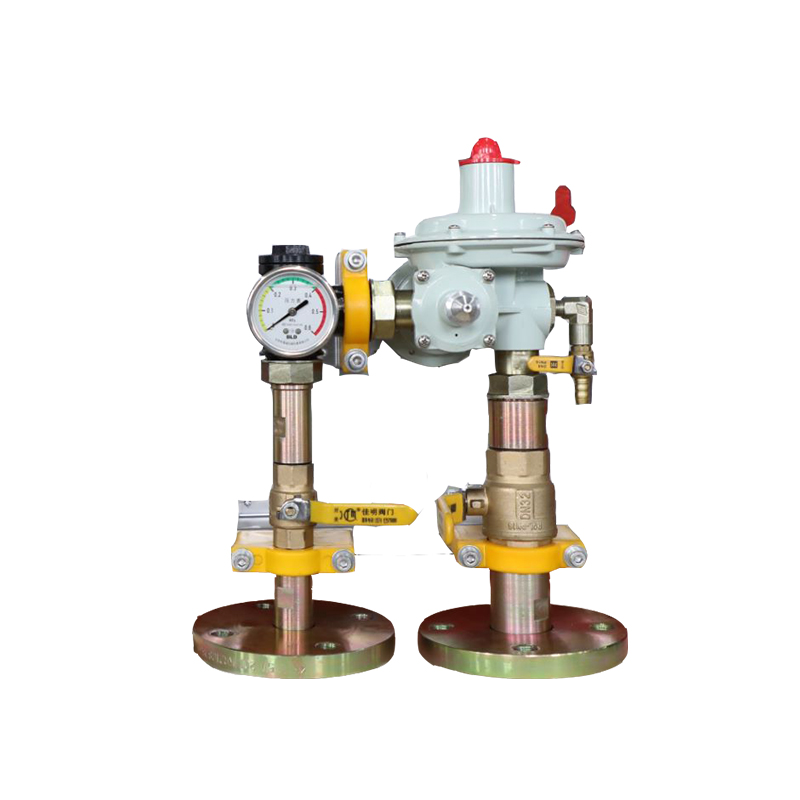
Dec . 24, 2024 07:12
Back to list
Gas Pressure Reduction Station Overview and Importance in Energy Distribution
Gas Pressure Reduction Station An Essential Component of Natural Gas Infrastructure
Gas pressure reduction stations (GPR stations) play a critical role in the safe and efficient distribution of natural gas. As the demand for natural gas continues to rise globally, this infrastructure component becomes increasingly significant in ensuring that gas delivery systems function smoothly and safely.
What is a Gas Pressure Reduction Station?
A gas pressure reduction station is a facility that decreases the pressure of natural gas from high-pressure transmission pipelines to a lower pressure suitable for distribution within local networks. This operation is necessary because natural gas is transported over long distances under high pressure to ensure efficient movement and minimize losses. However, when it reaches the end users—such as homes, businesses, and industries—the gas pressure must be reduced to a level that is safe for use.
Importance of Pressure Reduction
One of the primary reasons for pressure reduction is safety. Natural gas is combustible, and high-pressure gas poses significant risks, including the potential for leaks and explosions if not handled correctly. By reducing the pressure to an appropriate level, GPR stations ensure that the gas can be safely utilized in residential heaters, industrial boilers, and power plants.
.
Components of a Gas Pressure Reduction Station
محطة تخفيض ضغط الغاز

A typical pressure reduction station consists of several key components. The primary part is the pressure regulator, which is responsible for reducing the incoming gas pressure. Regulators may be equipped with safety features such as relief valves that activate in case of overpressure conditions.
In addition to regulators, GPR stations often include filtration systems to remove impurities from the gas, ensuring the quality and reliability of the supply. Some stations also incorporate flow meters to monitor the amount of gas being distributed, enabling operators to make informed decisions about gas management.
Moreover, modern GPR stations are equipped with remote monitoring and control systems, enabling operators to oversee the facilities' functioning in real-time. This technology allows for rapid responses to any issues that may arise, enhancing the overall safety and efficiency of the gas distribution network.
Environmental Considerations
While gas pressure reduction stations are vital for maintaining a steady supply of natural gas, they must also align with environmental standards and regulations. The natural gas industry is aware of its impact on greenhouse gas emissions, and measures are being taken to reduce the carbon footprint of GPR stations.
Recent advancements in technology have enabled the development of more efficient pressure reduction systems that minimize the potential for gas leaks. By incorporating technologies such as smart sensors and automated controls, operators can enhance the environmental performance of GPR stations.
Conclusion
In summary, gas pressure reduction stations are essential to the safe and efficient distribution of natural gas. They ensure that high-pressure gas from transmission pipelines is safely reduced to a suitable level for end users, thereby playing a critical role in energy supply chains. As the demand for natural gas grows and environmental concerns become more pronounced, the industry will continue to seek innovative solutions to optimize the functionality of GPR stations while minimizing their environmental impact. Understanding the importance of these stations is key to appreciating the broader natural gas infrastructure and its role in meeting contemporary energy needs.
Next:
Latest news
-
Safety Valve Spring-Loaded Design Overpressure ProtectionNewsJul.25,2025
-
Precision Voltage Regulator AC5 Accuracy Grade PerformanceNewsJul.25,2025
-
Natural Gas Pressure Regulating Skid Industrial Pipeline ApplicationsNewsJul.25,2025
-
Natural Gas Filter Stainless Steel Mesh Element DesignNewsJul.25,2025
-
Gas Pressure Regulator Valve Direct-Acting Spring-Loaded DesignNewsJul.25,2025
-
Decompression Equipment Multi-Stage Heat Exchange System DesignNewsJul.25,2025

